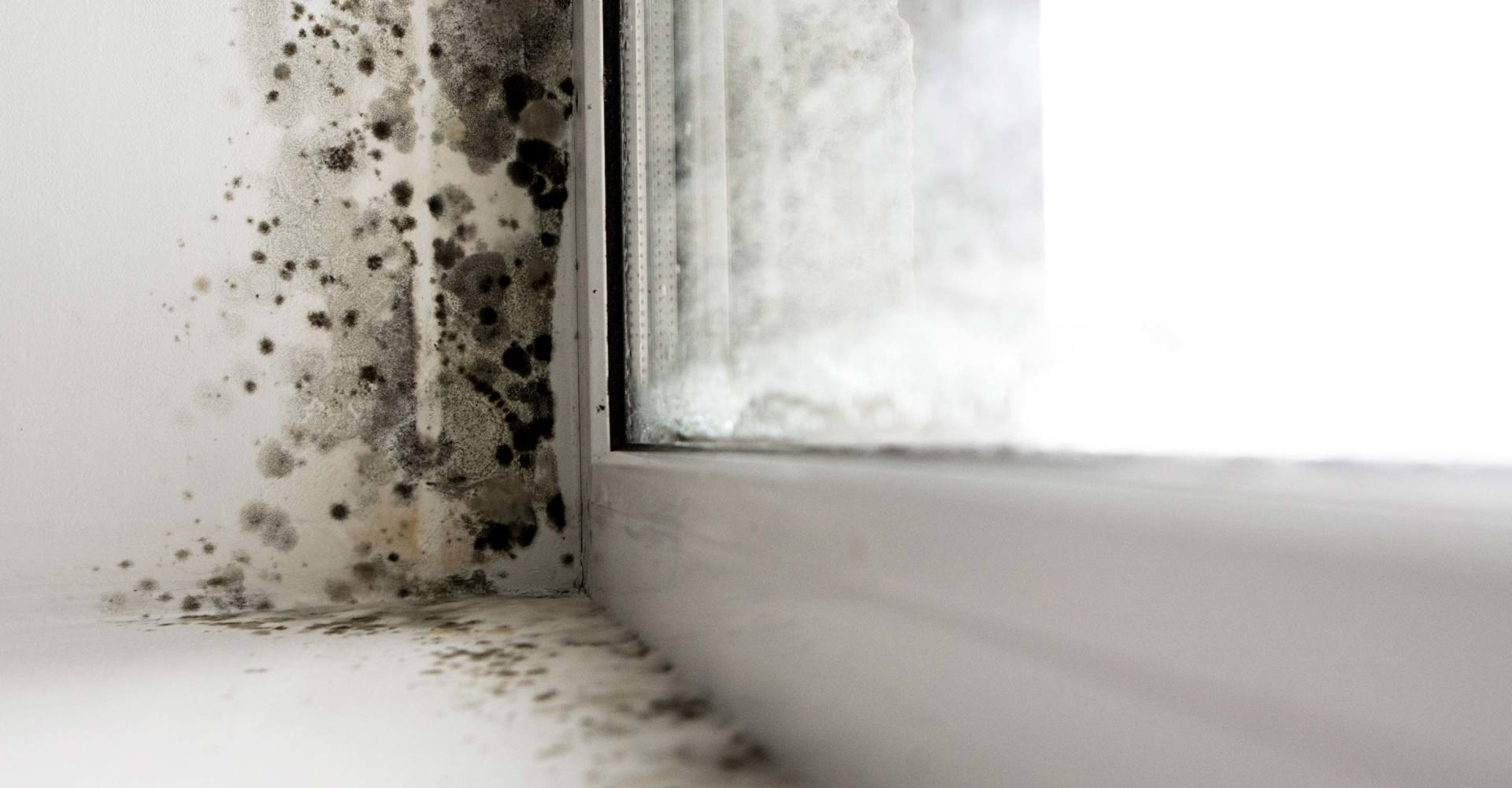Condensation
Condensation is caused by the moisture of water vapour which, when in contact with colder surfaces, tends to condense and revert back to its liquid state.
Cold areas can be associated with cold walls because of the ineffective thermal bridges; the poorly insulated parts; the detachment of the floor due to mould; the degradation of parquet walls, particularly wooden ones where the slats become uneven.
The main effects of condensation are: colonies of vegetative microorganisms, mould and bacteria, which are particularly harmful to human health.

How is it formed?
In rooms with a high level of moisture, there are several things that can cause it. Basically, when condensation creates moisture, there is a change in temperature that can be typically associated with: inefficient thermal insulation, changes to the air, the presence of thermal bridges (constructional junctions between the cornerstones and walls) or the use of non-breathable products, such as paints or coatings). This type of moisture can also generate mould in frames and areas such as the bathroom and kitchen.
Where does the condensation phenomenon occur? It mainly affects the surrounding walls, floors and ceilings. Furthermore, the moisture can also damage household furniture, particularly cabinets, and all the corners of the room where there is poor air circulation.
Where does the condensation phenomenon occur? It mainly affects the surrounding walls, floors and ceilings. Furthermore, the moisture can also damage household furniture, particularly cabinets, and all the corners of the room where there is poor air circulation.
How does it work?
Each cubic meter of air can only contain a certain amount of grams of water vapour at each temperature. The colder the air, the less vapour there is once it reaches its saturation point, beyond which, the excess is expelled in the form of droplets.
When this happens outside it is called dew; when it happens inside it is called condensation.
The latter is thus formed when the indoor air is cooled upon contact with cold surfaces inside the building, thus creating the ideal conditions for spores and moulds to settle and prolificate.
Studies have shown that the human body is able to tolerate an impressive humidity level of 42% -55%. Anything above and below these amounts can make the air harmful to the health of people and animals, namely through the outbreak of various illnesses. It can also lead to the formation of mould.
What damage does it cause?

AESTHETIC DAMAGES
Spots and rings of moisture, mould, peeling plaster, flaking paint, salt efflorescence, ruined wooden furniture and structures, and, in the worst cases, the detachment of the plaster caused by the emerging salts.
DAMAGE TO HEALTH
Health risks include eye, skin and throat irritation; allergic or immunological reactions, such as rhinitis, eczema, erythema, colds, conjunctivitis, gastro-intestinal disorders, joint pain and arthritis; neurological reactions such as migraines and headaches, vertigo, tiredness and depression; and irritation of the respiratory tract that can become chronic, turning into bronchitis and asthma.
Health risks include eye, skin and throat irritation; allergic or immunological reactions, such as rhinitis, eczema, erythema, colds, conjunctivitis, gastro-intestinal disorders, joint pain and arthritis; neurological reactions such as migraines and headaches, vertigo, tiredness and depression; and irritation of the respiratory tract that can become chronic, turning into bronchitis and asthma.

ECONOMIC DAMAGES
Excessive heating costs (due to the cold walls causing evaporation).
Excessive heating costs (due to the cold walls causing evaporation).
Everyday use of dehumidifiers. Constant resurfacing of plaster, paint, wooden floors, damaged furniture and upholstery. The disuse of damp areas.







